Shrimp is the most important commodity, by value, in the international seafood trade. The shrimp industry has grown exponentially in the last decades, and growth is expected to continue for years to come.

A new and better technology to culture shrimps is being used by many enterprising shrimp farmers nowadays. Green water technology is a technique that cultures shrimps in water that is abundant in phytoplankton i.e. Chlorella, turning the water green hence, its name.
Pond Preparation
To prepare the pond, it should be dried and drained of water for three weeks until the soil at the bottom is cracked. The muck or the black soil at the bottom of the pond should be scraped off. Then the ponds are flooded with water and dried for another week. Hydrated lime at a rate of 2 tons per hectare is applied before the final flushing and sun drying.
When the pond is clean and dry, double hapa nets (10×10×1.5 meters) should be installed at the center of the pond. Bamboo catwalks from the dikes to the pens should be installed to facilitate easy feeding and monitoring of fish.
Water Culture/ Fertilization
After installing the pens, the ponds should be filled with seawater to a maximum depth of 1.0-1.2 meters and the gates should be sealed. The water depth should be maintained by installing a depth gauge. To make sure that the water is free from predators and other possible competitors, teaseed powder (20 ppm) should be applied. Fine mesh screens should be installed at each outlet of the flume to prevent predators from entering the pond during pumping.
Stocking and Stock Sampling
To check the growth and condition of the shrimps, the stock should be sampled after 30 days from culture and every 10 days thereafter.
Feeding Management
For shrimps, they should be fed right after stocking. Shrimp feeds are broadcasted around the pond with a portion of the feeding ration left in the feeding trays. Four trays measuring 0.25 square meter should be installed to monitor the amount of feeds consumed everyday. During the first 30 days, blind feeding is practiced. About 200 grams of feed per 10,000 postlarvae is given. One to three hours after feeding, the trays are lifted and the amount of feed consumed is estimated. From 40 days of culture, the shrimps are fed five times a day, i.e., 6:00 AM. 10:00 A.M., 2:00 P.M., 5:00 P.M. and 10:00 P.M. at 20%, 10%, 10%, 35%, and 25%, respectively of the total feeding ration.
Water Management and Aeration
After 30 days of culture, 10-20% of the water in the pond is drained and replaced with water from the reservoir ponds. It should be noted that the water from the reservoir ponds should be allowed to stay for at least 4-5 days before they are used to replenish the water in the shrimp rearing ponds.
The ideal amount of dissolved oxygen is maintained by using six paddle-wheel aerators. In the first 60 days, only four aerators are alternately operated for 24 hours. Another aerator is installed in each tilapia pen to increase the circulation of water and phytoplankton in and out of the pens.
Harvest and Post-Harvest Handling
Shrimps are harvested when they weigh at least 30 grams. Harvesting is done by draining the water and collecting the shrimps using a harvest net installed at the pond gate. The collected shrimps are placed in water with crushed ice to maintain their quality. The shrimps are then sorted according to size and placed in boxes with crushed ice to be shipped to shrimp processing plants where they are packed for export purposes.
References
PCAMRD – Philippine Council for Aquatic and Marine Research and Development
Department of Science and Technology (DOST
Jamboree rd., Brgy. Timugan, Los Baños, Laguna
Tel. No.: (049) 536-5578, 536-5579, 536-1574
Telefax: (049) 536-1582
E-mail: pcamrd@laguna.net
PCAMRD Liaison Office
2nd Floor, Rm. 205 PTRI Bldg.
Gen. Santos Ave., Bicutan, Taguig, Metro Manila, Philippines
Telephone Number: (63 2) 837-2071 up to 82 local 2430
Web: www.pcamrd.dost.gov.ph
BFAR – Bureau of Fisheries and Aquatic Resources
Arcadia Building
860 Quezon Avenue
1103 Quezon City, Philippines
Tel No. : +63(2)3725043
Fax No. : +63(2)3725048
Email : info@bfar.da.gov.ph
Web: http://www.bfar.gov.ph
Source: bar.gov.ph
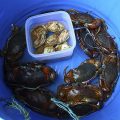
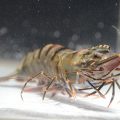

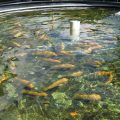
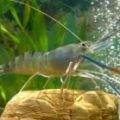
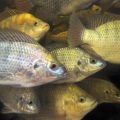

Thanks for your comment! It’s so exciting to read your article and to know more about shrimp farming. I made sure to follow it. for more information http://www.asagriaqua.com/
YES, of course! 'Culture means giving an articicial atmosphere conducive to the biological requirements of your cultured species.
i wish to ask , could i raise shrimp at home in a little tank??? .
plese reply
Brackish water Ranching
Aquaculture farming is a century-old practice in many Asian countries. Until two decades ago, this commodity was still generally considered a secondary crop in traditional Fish Ranching practices. Aside from tropical countries, Europe, Japan, China, USA and other countries were and still very much involved in fish/shrimp culture. When in fact there are no more doubts about the tonnage requirements of sea foods in the world market, yesterday, today and the future due to increasing world’s populations.
Brackish water species (fish, prawn/shrimp, crabs & others) will survive in three different culture systems, traditional-extensive, semi-intensive & intensive. Survival rates and the quality of the product remain to bother aquaculture farmers, because these could be the basis of the demand of better price in the world market. The future of fish/prawn industry lies in the hands of individual operators and/or farmers, as to the kind of technology they are inducing throughout the culture periods.
Quality is never an accident. It is always the result of high intention, sincere effort, intelligent direction and skillful execution. All of these requirements can only be achieved if you are a holder of a Daily Parameter on Prawn/Fish Biological Requirements (DPP/FBR). Aquaculture is the raising of marine species outside from its natural habitat from hatching to maturity to marketable sizes, supported and back-up by artificial means of supporting its life in different biological requirement based on their habitat — from estuarine to inner littoral to the outer littoral of the sea.
Aquaculture technology is a “Knowledge of Power” — but it depends upon the source of your technology. Aquaculture is an arithmetic bugs, it Adds to your misery; Subtract to your pleasure; Divide your attention and Multiply like HECK!
Daily Parameter on Prawn/Fish Biological Requirements (DPP/FBR)
This Daily Standard Culture Period is a simple gizmo/gadget where you can simply compare evaluate your daily recorded parameters, fundamental to the biological requirements of you cultured stocks. These includes the life transition periods, density, body weight, type/feeding rates, water salinity/deepness, days of culture, harvest date, survival, total yield, etc., etc., etc.
Should you wish to get hold of this amazing gizmo, please fill free to contact us
At: 0927-751-2773; 0928-389-9115; 0922-687-9576 vickmesco@gmail.com